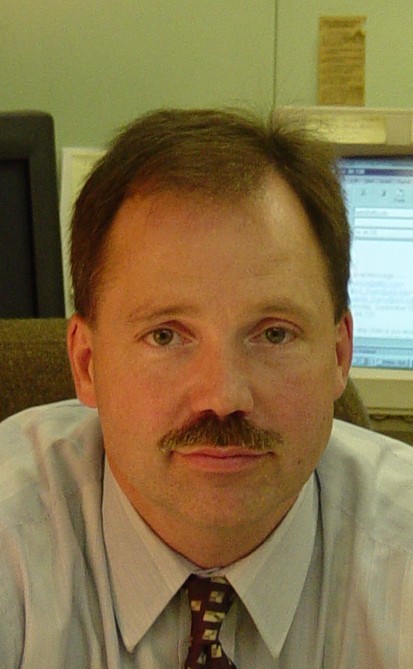|
CHEMICAL
OCEANOGRAPHY
|
|
|
CHEMICAL
OCEANOGRAPHY
|
|
|
HOME | SYLLABUS | STUDENTS | SCHEDULE | FACULTY | MATERIALS | FORUM | LINKS | |
 |
 |
| www.smast.umassd.edu/cmastweb/bioaltabet.html | http://faculty.uml.edu/david_ryan |
|
Mark A. Altabet, Ph.D. Professor
School for Marine Science and Technology(SMAST)
University of Massachusetts Dartmouth
maltabet@umassd.edu |
David K. Ryan, Ph.D. Professor
Department of Chemistry
University of Massachusetts Lowell
david_ryan@uml.edu (978) 934-3698 (Tel) (978) 934-3569 (Fax) |
|
Research Interests: My work has focused on understanding major biogeochemical cycles in the marine environment, as they operate today and in the past, using natural variations in isotopic ratio as in situ tracers (e.g. 15N/14N, 13C/12C, and 18O/16O). Prior and current studies include investigations of near-surface and water column nitrogen and particle dynamics, paleoceanographic reconstruction of past changes in marine denitrification and surface-ocean nutrient utilization, and sedimentary nitrogen transformations. On-going projects emphasize synthesis between modern studies to understand the nature of key biogeochemical cycles and the isotopic signals they create with paleoceanographic reconstructions of those cycles. Much of this research relates to the Earth's carbon cycle and control of atmospheric CO2 concentration. Related work involves studies of N2O and carbon isotopes. Study sites include the coastal environment as well as the open ocean (e.g. Southern Ocean and Eq.Pacific) |
Research Interests: A major focus of my research continues to be the use of fluorescence spectroscopy to investigate the interactions of pollutants with natural organic materials (i.e., humic materials). Fluorescence quenching and enhancement phenomena are being studied as the means to assess binding reactions of metal ions (Cu2+, Al3+, Ni2+) and synthetic organic compounds (amines) with fulvic and humic acid. Recently we have begun to explore the use of Nuclear Magnetic Resonance (NMR) spectroscopy for metal binding studies. Several NMR techniques are being investigated, including: relaxation times (T1), solvent supression, and 27Al NMR to assess metal complexation by humic materials. We have been measuring the bioaccumulation of metals by the marine mussel, Mytilus edulis, in both laboratory and field studies in collaboration with Dr. William E. Robinson, a biologist at UMass Boston. Laboratory studies have dealt with physiological questions such as the sites of metal uptake and elimination in the organism and transport of metals between organs and through the blood. Field work has concentrated on the use of mussels as indicator organisms for monitoring coastal waters and the prediction of seawater metal levels from the measurement of bioaccumulation by mussel transplants. Our laboratory has been involved in the analysis of soils, sediments, water and biota from around Massachusetts, Mexico and Central America. The main thrust of the work has been the analysis of metals by plasma emission, ICP-MS and Instrumental Neutron Activation Analysis (INAA). Recently, we have also started, in collaboration with DEP, to investigate storm-drain waters. The analysis of alpha-tocopherol (vitamin E) has been undertaken. This study is in collaboration with Dr. Eugene Rogers of UMass Lowell's Department of Clinical Laboratory Sciences. |